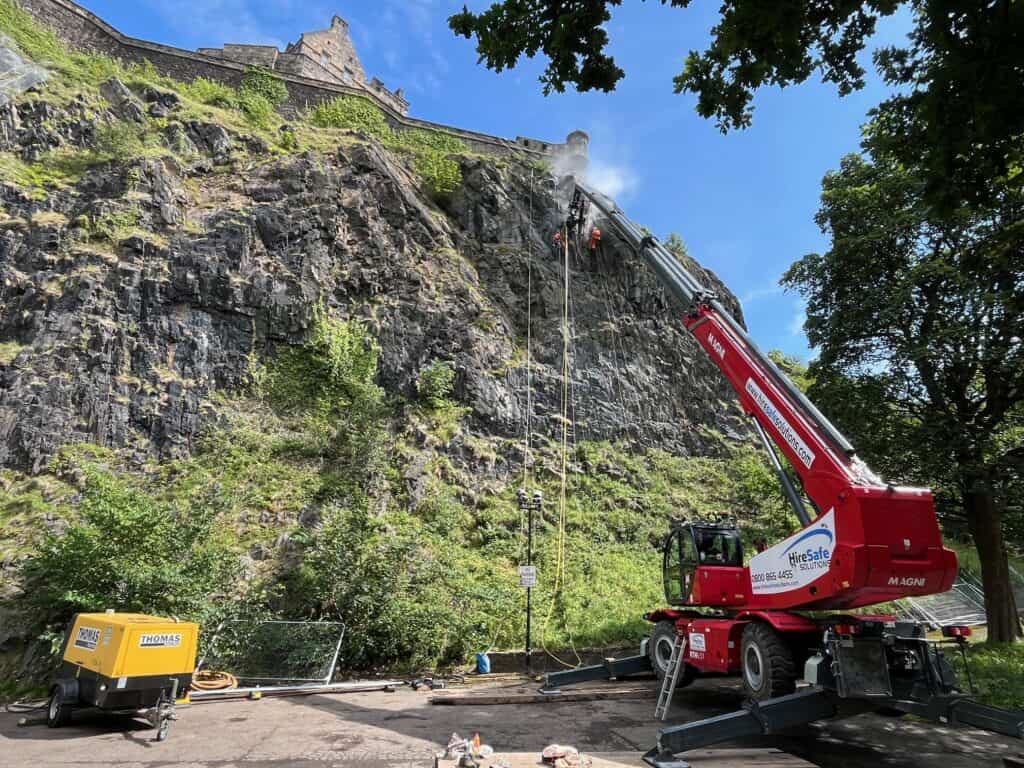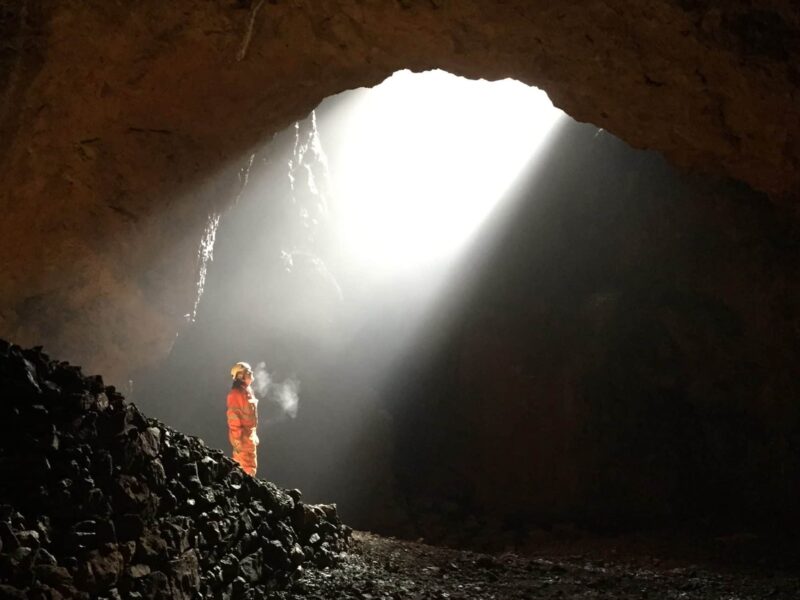Edinburgh Castle rock stabilisation
During July 2025 a small team from Bell Access undertook an ambitious project at Edinburgh Castle to stabilise a large detached block on the North-West face of Castle Rock. The potentially unstable rock mass was estimated to weigh in the region of 50 tons and was discovered by one of our technicians during scaling works in October 2024.
The stabilisation work was carried out on behalf of Historic Environment Scotland, and we were working under the guidance of engineers from Fairhurst, who maintained a presence on site for the duration of the works to specify the exact dowel locations and orientations. 12 rock dowels were specified to stabilise the block, 5 at 3m length, and 7 at 6m length. The drilling location proved to be particularly challenging due to very limited access to the top of the cliff, making standard rig drilling from a cable supported sled or A-frame impossible. The dowel locations were also up to 40m vertically, and 20m horizontally out from the toe of the slope, which put it well out of the reach of an excavator. We therefore utilised a Magni 6.51 Roto-telehandler to support our drill mast. With a maximum reach of 51m, this is one of the largest machines of its type in the country, and to our knowledge, this was the first time it had been used as a drilling platform.
To ensure that the road at the toe of the cliff could support the weight of the machine, ground investigation works were undertaken prior to the job starting. For the drilling, we used our 3.5m stroke, remote controlled hydraulic drill mast. This is fitted with a tilt-rotator which meant that the mast could be precisely aligned with the inclination and declination specified by the engineer on site. Because of the length of the anchors, and the requirement for complete resin encapsulation, we used the drill mast to spin in the anchor bars. This ensured that the bars were installed during the maximum 200 second gel time specified by the resin manufacturer. To ensure that the resin filled the full depth of the hole, we installed plastic pipes into the hole before inserting the resin. Hole depth and openness were then proved using drain rods. The plastic pipe ensured that the resin spanned the considerable void at the fracture plane at between 1m and 2m depth. Due to the low angles of the holes, simply pushing the resin capsules into the holes would not have been effective.
The castle walls above the drilling location remained open to the public throughout the works. With this being such a high-profile site, and to minimise the impact to visitors, all plant and equipment was sited at the base of the slope. Access to the drilling location was achieved by abseiling over the castle walls from weight block anchors, supervised by a ‘top man’ during the works. This location was only accessible via a narrow spiral stone staircase, which a was another unique feature of this job.
Despite the many unique challenges of this job, all works, including site establishment and de-mobilisation were completed to specification within 3 weeks.

Project Details
Location: Edinburgh; Scotland
Designer: Fairhurst
Client: Historic Environment Scotland
Duration: 3 weeks

